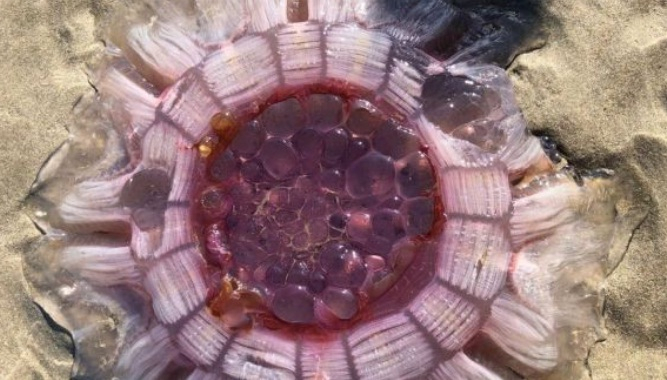
Adam Dickinson, a 31-year-old man recently spotted a bizarre giant creature on Pakri beach, which is roughly 55 miles north of Auckland, New Zealand. The giant creature's body had a number of purple blobs arranged in a circle and it is bounded by a sun-shaped ring. Adam's wife Eve and children, four-year-old Lucas and five-year-old Sofia, were also present at the beach when the weird creature was spotted.
An alien-like contracting creature
As soon as the creature was spotted, the family surrounded it, they were shocked to see it moving slowly. Dickinson later revealed that the creature literally looked like an alien and added that the weird marine creature contracted and expanded its muscles.
"We had been out walking and there was up to 100 jellyfish along the estuary and beach. At the end, after about an hour, we came across this one. It almost looked alien-like and was slowly moving or contracting. Our initial reaction was impressed because it's an amazing looking thing," said Adam Dickinson, Express.co.uk reports.
After some hours of the spotting, New Zealand's National Institute of Water and Atmospheric Research revealed that the creature washed up on the Pakri beach was actually a lion's mane jellyfish. The institute also added that this is the world's largest species of jellyfish.
Lion's Mane jellyfish: All you need to know
Oceana, an International conservative organization reveals that lion's mane jellyfish also known as giant jellyfish is a marine creature that can grow as large as a blue whale. The tentacles of lion's mane jellyfish can reach 190 feet long and it can have a bell diameter of up to 7 feet.
Usually, lion's mane jellyfishes are found in the Arctic and the Pacific Ocean, where waters tend to be cooler. This species typically feed on plankton and other microorganisms living in water. While hunting, lion's mane jellyfish uses its poisonous tentacles to paralyze the prey.








